
Clutches: Difference Between Non Modular and Modular Clutch Just because I have seen this brought up so many times on the forum, I thought I would do a write up on the differences. A few quick notes; 1. Both clutch set-ups bolt up to our crankshafts 2. Both set-ups use the same throw out bearing 3. There is no shimming or alterations to be made to use our NV-T350 transmissions 4. The crank seal is the same 5. If you are changing to a non modular clutch then you MUST get the longer Neon flywheel bolts (use 95 Neon flywheel bolts. That is the only domestic year Neon that had a non modular clutch) The Chrysler Part Number for these bolts is 6503464 - they are $1.76 from http://www.chryslerpartsdirect.com6. If your clutch does not come with bolts for the flywheel to pressure plate you will need 6 of those for the 95 Neon as well. It may be easier to take the flywheel to a hardware store and locate Grade 8.8 or Grade 10 bolts that fit as opposed to odering these directly from DCx. Now, on to the clutches. Modular Clutch The modular clutch is what comes stock on our vehicles. It comes as one piece (usually riveted together. But it is sometimes bolted together in aftermarket applications). This one piece contains the pressure plate, the disc and the flywheel altogether (again, riveted or bolted). It is bolted to a plate that contains the starter ring gear (called the flexplate) via 4 bolts. Here is a pic of both of them (the flexplate is on the right); FRONT VIEW 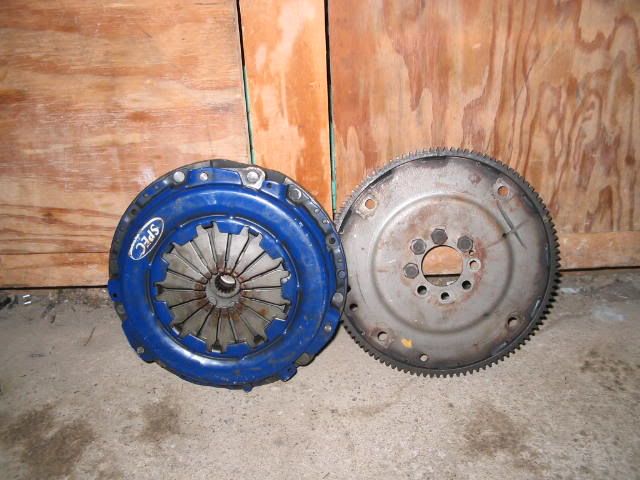 BACK VIEW 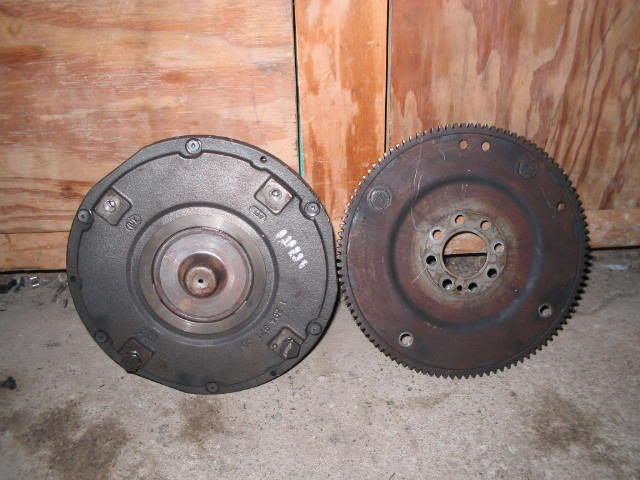 As you can see, the flex plate has four holes that are used to bolt the modular clutch set-up onto the plate. You can see the 8 bolt holes in the middle. They are used to bolt the flex plate onto the crank, like this; 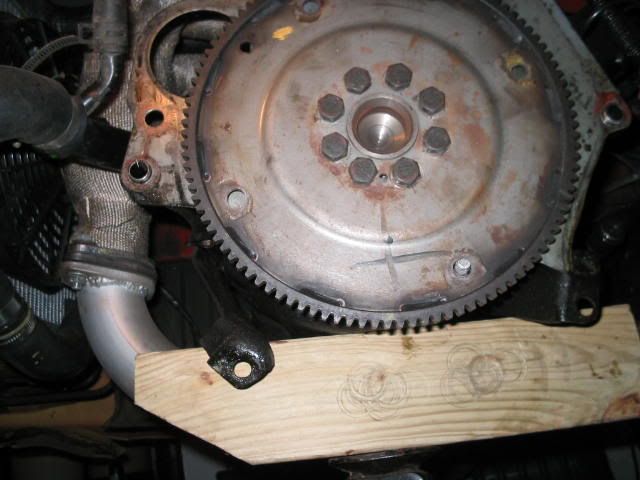 After you bolt the flex plate on, you put your tranny on, with the modular clutch slid onto the output shaft of the tranny (not shown because, well, I�m not putting my modular clutch back in). But I will show a pic of where you will put your bolts through to bolt on the clutch set-up when you slide your tranny on and bolt the tranny in (obviously shown without tranny in place) 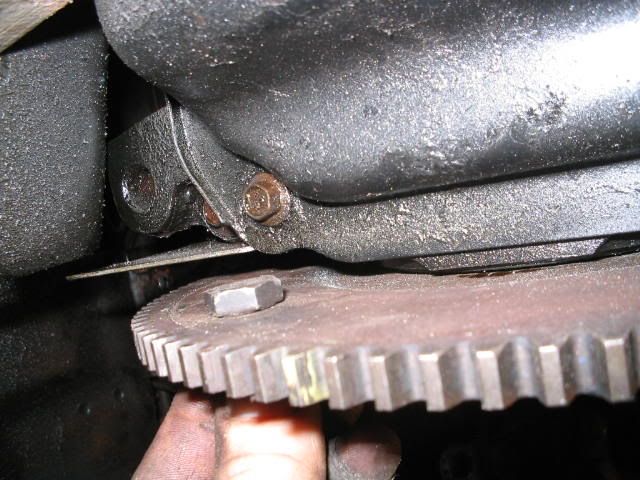 Then turn your crank over to get to the three other bolt holes (though these holes are position specific. You may have to rotate the clutch assembly until you can get all four holes to line up). That�s pretty much it. NON MODULAR CLUTCH This is the set-up that people seem to be more familiar with. It has three separate pieces; a flywheel, a disc and a pressure plate. 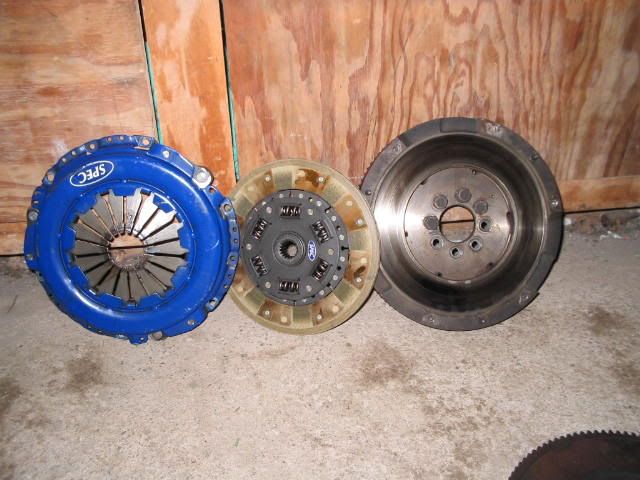 The flywheel gets bolted onto the crank like this; 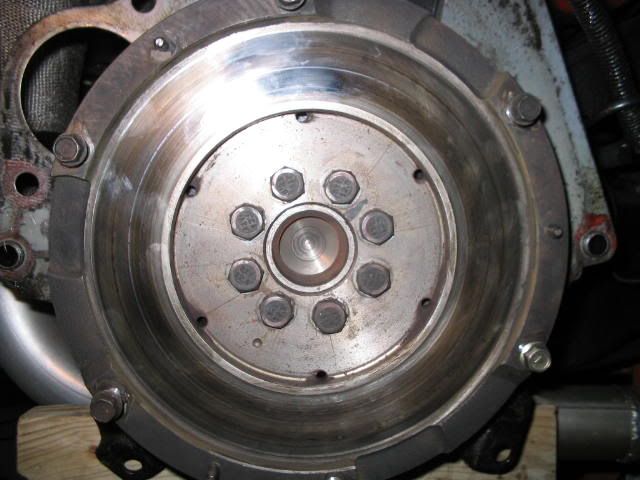 Remember because the flywheel is thicker than the stock flex plate, you will NEED the longer 95 Neon flywheel bolts. You then lay the disc in and put your pressure plate over it so that you can bolt it onto the flywheel. You will want to use an alignment tool to do this. It would look like this; 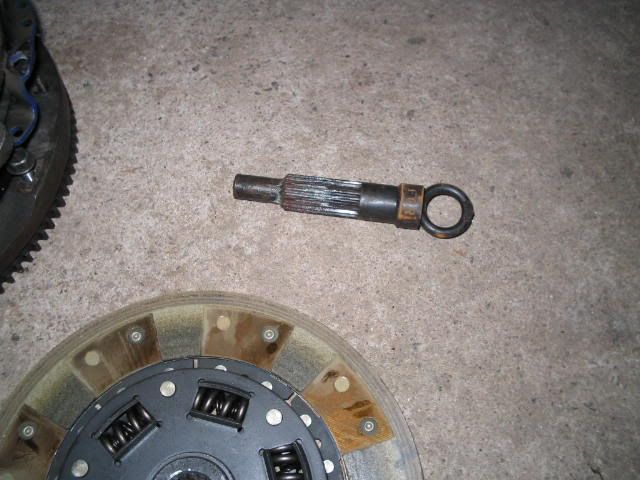 You slide this in the middle of the disc to keep it aligned while you tighten down your pressure plate to look like this; 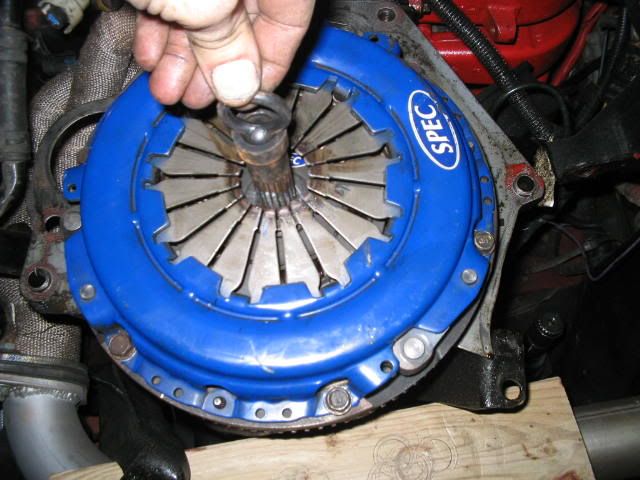 And that�s it. You are ready to slide the tranny onto the engine. It WILL be a bit more difficult to slide on due to the added dimension of the pressure plate and disc (which on the modular, is inside of the tranny housing while you slide the tranny in place. I hope this makes it a bit easier to understand the differences between the two kinds of clutches. This is written to see the difference between the two styles of clutches, therefore I didn�t put in torque specs or tightening sequences etc. You will have to pull that info on your own. MB wriiten by bullettdsm NV-T350 |
| Document statistics: Last modified on 2009-05-10 17:22:51 by bullettdsm |
